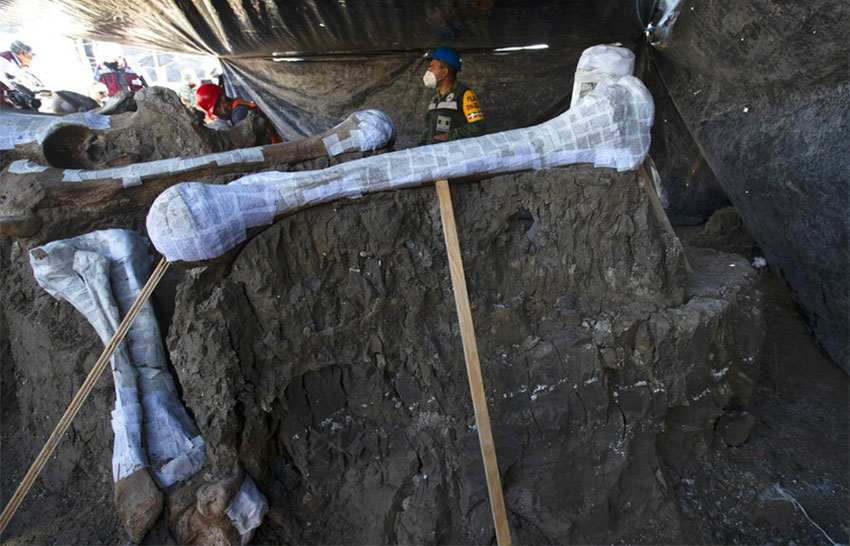The site of the new Mexico City airport has become “mammoth central” – more skeletons of the extinct mammal have been found there than anywhere else in the world.
The remains of at least 200 mammoths have been recovered at the Santa Lucía Air Force Base site in México state, archaeologists said Thursday, while the skeletons of many more are yet to be excavated.
Experts with the National Institute of Anthropology and History (INAH) also said they have found evidence that humans made tools with the bones of mammoths that died between 10,000 and 20,000 years ago.
Located about 50 kilometers north of central Mexico City, the airport site sits on the shores of an ancient lakebed that apparently attracted the trunked mammals and trapped them in its boggy soil. Differing hypotheses suggest that they either died a slow, natural death or were killed by hunters, who may have steered them into the mud.
According to a report by the Associated Press, there are so many mammoths at the Santa Lucía site that observers always accompany construction workers using bulldozers to ensure that work is stopped when bones are uncovered.

INAH archaeologist Rubén Manzanilla López said the remains of about 25 camels and five horses have been found at the airport site in addition to the skeletons of 200 mammoths. The camel and horse remains are of species that are now extinct.
Manzanilla said that evidence is emerging that the remains of the mammoths that died at the site may have been carved up by humans.
Experts believe that occurred at a site 20 kilometers from the airport in Tultepec, México state, where two mammoth traps were found last year.
Tests are currently being performed on mammoth bones found at the airport in an attempt to detect butchering marks.
Archaeologists working at Santa Lucía have discovered dozens of tools made out of mammoth bones similar to ones found at Tultepec.
However, Manzanilla said that it is too early to say that there is “well-founded” evidence for the hypothesis that humans carved up mammoths for food using those tools.

Paleontologist Joaquin Arroyo Cabrales said the Santa Lucía Air Force Base will “will be a very important site to test hypotheses” about the mass extinction of mammoths.
“What caused these animals’ extinction, everywhere there is a debate, whether its was climate change or the presence of humans. I think in the end the decision will be that there was a synergy effect between climate change and human presence,” he said.
There is plenty of evidence for archaeologists to examine. The number of skeletons uncovered so far is more than triple the number found at a site in Hot Springs, South Dakota. With about 61 sets of mammoth remains discovered there, the Hot Springs site was home to the world’s largest find.
The large number of mammoth skeleton discoveries at the Santa Lucía site may delay construction work but will not stop it, according to the army, which is building the airport.
President López Obrador has pledged that the new airport will be completed by early 2022.
Source: Associated Press (en)